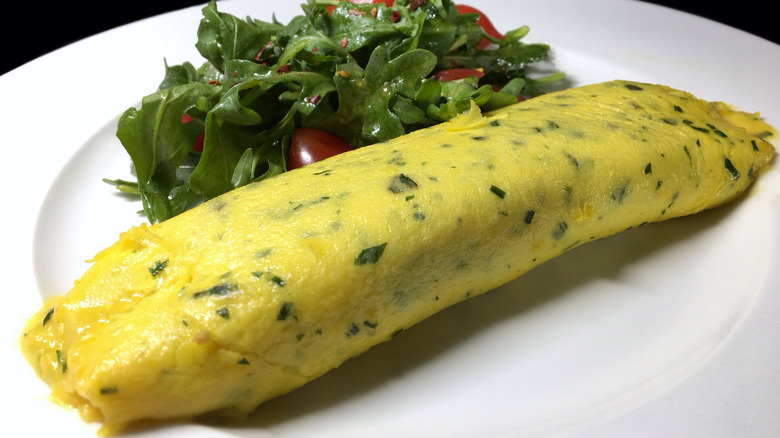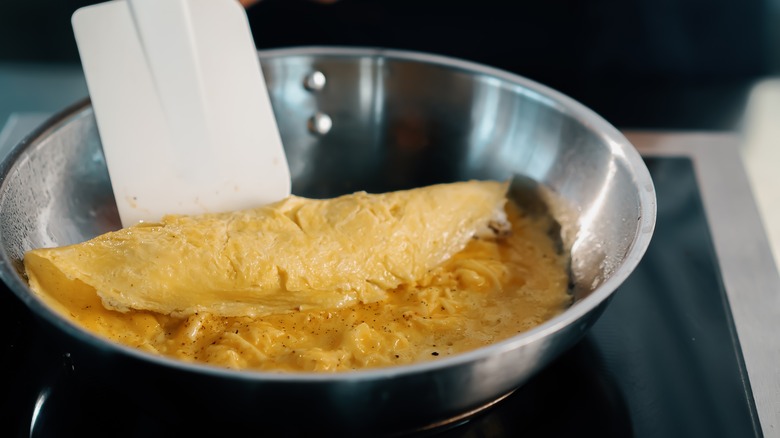The Shaking Tip To Master For The Perfect French Omelet
There are hundreds of ways to prepare the humble egg, but none are more simply elegant than the French-style omelet. This is not your average American diner's half-moon-shaped plate of firmly cooked eggs stuffed with typical omelet fillings like meats and vegetables. A French omelet is pale yellow, light textured, almost melt-in-your-mouth smooth. The flavor of the egg should be the main taste. A dash of bright green herbs and possibly a sprinkle of diced vegetables, cheese, or meat can be added, but any more than that would ruin the mouthfeel and, worse, distract from the main ingredient.
The art of cooking the perfect French omelet requires a technique that yields a smooth outer layer, not pocked or cratered by uneven layers of egg or air bubbles and flecks of browning. It takes two hands to achieve this feat: One stirs the egg with a spatula as it heats up to form little curds, and the other on the handle of the pan, shaking it lightly over the burner to create an even layer of egg all across the surface of the pan. That smooth bottom layer will become the outside of the folded omelet, enclosing the creamy, lightly scrambled egg filling.
Shaking creates an even, air-bubble free egg coating on the pan
From the minute the raw eggs hit the hot, buttery omelet pan, the pan-shaking motion comes into play. This movement helps settle any air bubbles in the egg created during the whisking process and keeps the liquid egg moving constantly over the pan's surface for faster cooking, along with creating an even bottom to the egg. Should using both hands simultaneously be difficult (like patting your head and rubbing your stomach), you can keep the spatula still inside the pan and use the pan's shaking movement to help scramble the eggs. The main goal is to shimmy a thin layer of egg all across the pan's surface.
When there's a slightly underdone layer of moist egg, stop moving it with the spatula and direct all your attention to evening out the contents with a final shake. You'll then roll one edge of the circle of eggs toward the middle of the pan, aiming for an even cylinder — a bit like a rolled crêpe — revealing your handiwork. Don't worry if it takes a few omelets to master this technique; the homework is delicious.

